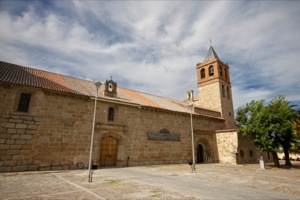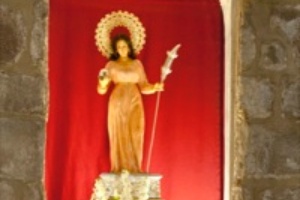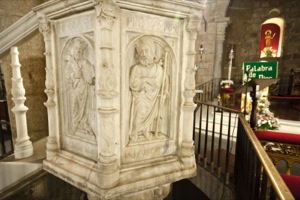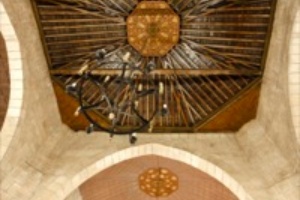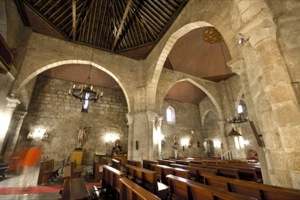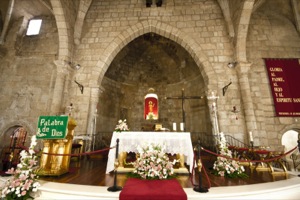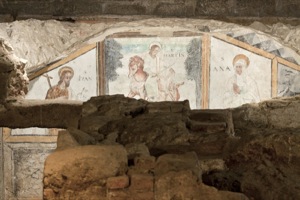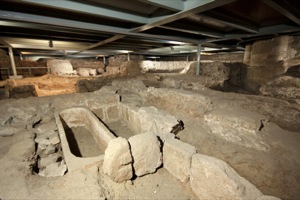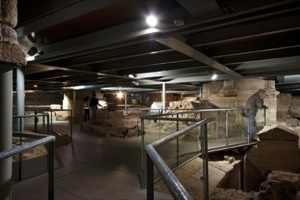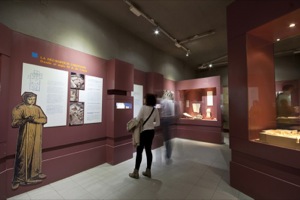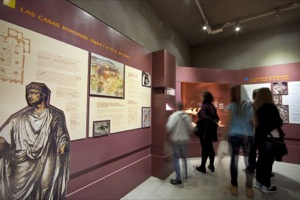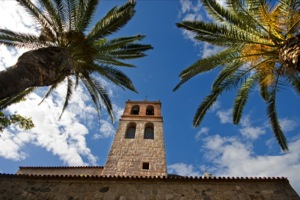Art and culture
Basilica of Santa Eulalia
A space included in the archaeological complex of Mérida, and a showcase within the regional capital as it contains the town's patron.
- Explore
- Basilica of Santa Eulalia
The fruit of many centuries of turbulent history
Location and Contact:
- Contact person: Tourist Information Office
- Tel.:+34 924 38 01 90
- Email: info@turismomerida.org
- Website address: www.turismomerida.org
-
A space included in the archaeological complex of Mérida, and a showcase within the regional capital as it contains the town's patron.
The present basilica of Santa Eulalia was built on the remains of a former Paleo-Christian basilica after the town was reconquered in 1230. Its physiognomy, and more specifically its design, in which the structure of the early church from the Visigoth era endures, is that of a basilica, with three naves corresponding to several chapels at the transept.
One of the most outstanding elements of this Romanesque-style church is the splayed doorway with horseshoe arch to which archivolts and small columns with capitals decorated with plant motifs and birds were adjoined.
Gothic and Baroque characters can also be seen in the church, as in the case of the doorway and a chapel.
After the renovation work carried out in the late 20th century the basilica became a showcase of the town's twenty centuries of history. With good reason the house of the patron of Mérida, the martyr Santa Eulalia, which you can visit in the Temple of Mars, is the oratory known popularly as "hornito", a tiny building located in the atrium of the basilica.
One extremely interesting visit is that of the crypt of the basilica, where burials from different ages are preserved.
-
- Origin:
-
- 13th century
- Construction:
-
- Church
- Art period:
-
- Visigoth
- Period in history:
-
- Various periods
- Various styles
- Official name :
-
- Property of Cultural Interest
Gallery:
More suggestions
-
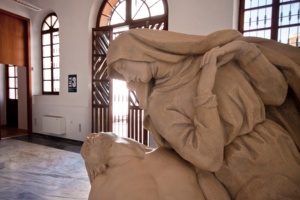
Museum of Mérida
The Museum of the Town of Mérida houses a collection on the Mérida-born sculptor and other pieces that take one on a route through the town's history.
-
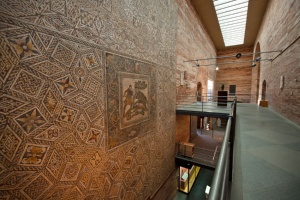
National Roman Art Museum in Mérida
The National Roman Art Museum (MNAR) shows the visitor different sides of daily life in the province of Hispania.
-
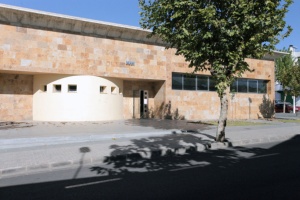
Extremadura Geology Museum
Its collection has made this museum one of the most important of its kind.
-
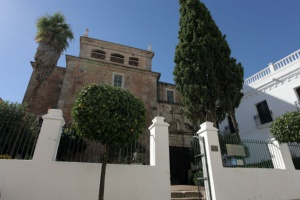
Museum of Visigoth Art and Culture
The collection of Visigoth pieces in this museum brings together relics from Mérida from the 4th-8th centuries, as the capital of the Diocesis Hispaniarum and as the metropolitan capital of the province of Lusitania
-

Roman bridge on the Albarregas River
Built when the Roman city of Emerita Augusta was founded, the bridge on the Albarregas River is still in perfect condition and includes some of its original features.
-
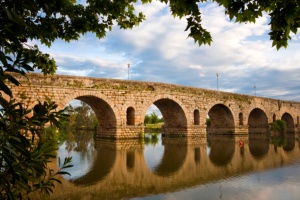
Roman bridge on the Guadiana River
In the city of Mérida, on one of the most shallow sections of the Guadiana River, we find a bridge built in the 1st century, at the same time as the foundation of Emerita Augusta. Thanks to its large size and features it is one of the most important Roman bridges in the Peninsula.
-

Remains of Roman thermae in Mérida
Without a doubt the capital of Extremadura is one of the region's enclaves with the most thermal bath constructions.
-
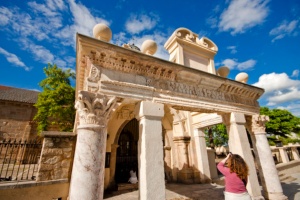
Remains of the Temple of Mars
The basilica of Santa Eulalia in Mérida contains the remains of the Roman temple of Mars in its atrium, known as "el hornito".
-
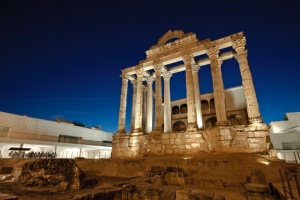
Roman Temple of Diana
It is a beautiful religious Roman building, very well preserved, that is part of Mérida's archaeological ensemble.
-
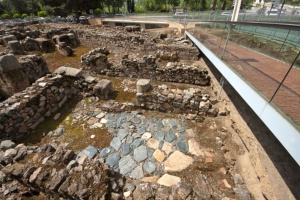
Morerías Archaeological Zone
Find out how the town of Mérida developed from Roman times to the Visigoth era.

